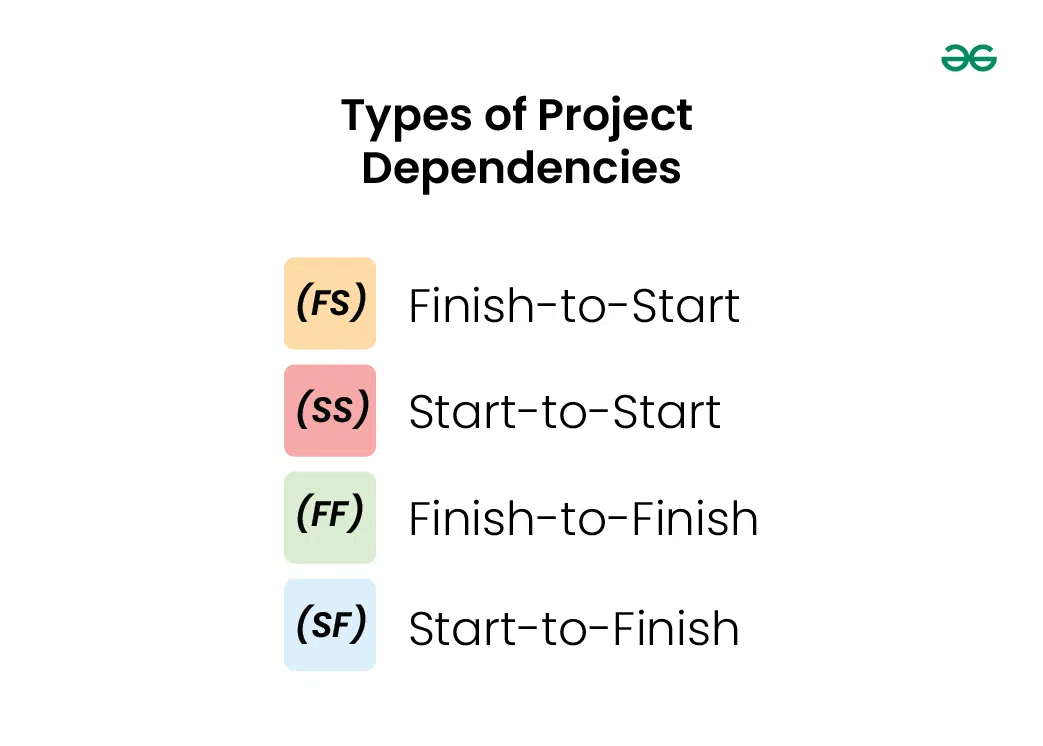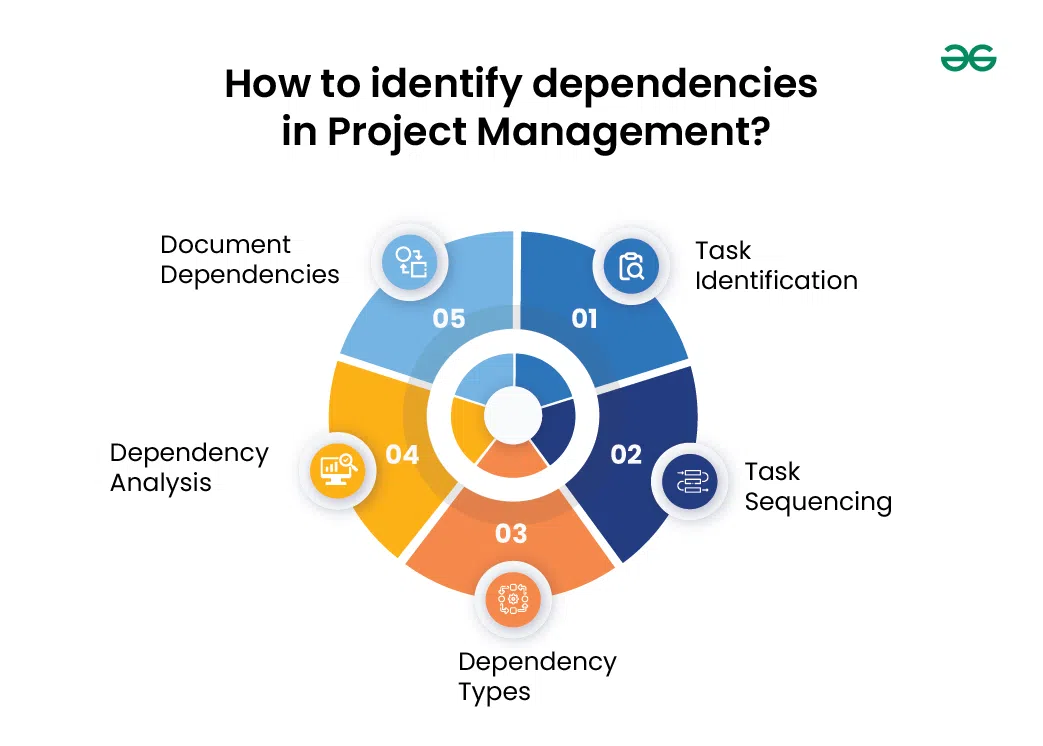How to identify dependencies in project management?
Last Updated :
10 Apr, 2024
Project management entails multiple elements that are interrelated and the ability to make things move forward. The selection of dependencies and how they are managed is still one of the essential drivers determining the path to the project life cycle. In project management, project dependencies imply the interconnection between various tasks and activities, such that a given task is executed by completing another. The right planning and implementation in projects require proper identification of these dependencies.
What are Project Dependencies?
Project dependencies consist of project relationships and connections among tasks. It is crucial that project managers identify each task and then determine their interdependencies in order to know what is required at a particular moment. It then becomes possible to identify these relationships among the various tasks that make up an elaborate disaggregation or breakdown of the project into details. Task sequencing thirdly, whereby the sequence in which different tasks should be undertaken for the success of a project and its goals and objectives is put forward.
Dependency analysis refers to developing task relationships by using various charts such as Gantt’s and networks. The dependencies are documented as points of reference to the project team in the log of dependencies. Dependency understanding is what projects are managed with and is the life of a project from the beginning to the end.
Importance of Project Dependencies
Project dependencies are significant as they determine the forward movement of a project. It involves determining the dependencies and making sure that they run in an orderly manner to enable the successful completion of the entire project. Project managers must recognize these interconnected relationships in order to preempt challenges, optimize resource allocation, and reduce risks hence improving project efficiency and reducing delays.
Types of Project Dependencies

Types of Project Dependencies
Finish-to-Start (FS):
- Definition: This is known as the successive mode and in it the dependent task begins after its parent task is complete.
- Example: The design stage must be completed before the development process can be initiated.
Start-to-Start (SS):
- Definition: There is a parallel relationship since two tasks begin together.
- Example: This method starts with both designing and coding phases simultaneously in order for the project to be fast-tracked.
Finish-to-Finish (FF):
- Definition: That is the simultaneous completion of two tasks, a parallel relation.
- Example: The testing and documentation ends together.
Start-to-Finish (SF):
- Definition: However, a dependent task may not end prior to beginning of its dependency task.
- Example: The development phase should not start before the testing phase end.
How to identify dependencies in Project Management?
Dependency identification in project management plays an important role for the smooth and successful accomplishment of a project. This is a methodical way of looking into how different tasks relate and depend on each other. Here’s a detailed guide:

How to identify dependencies in Project Management
Step 1: Task Identification
Begin by creating a comprehensive listing of all the tasks involved in order to identify the interrelations (dependencies) among them. Therefore, it is important for the breakdown of the project into its minute task parts in detail.
Step 2: Task Sequencing
Identify the various tasks and place them in sequence thereafter. Detail the order of the tasks that will help achieve the objectives of the project.
Step 3: Dependency Types
Dependencies can be categorized into different types:
- Finish-to-Start (FS): The task which a dependent task starts upon completion of its parent task.
- Start-to-Start (SS): Two tasks start simultaneously.
- Finish-to-Finish (FF): Two tasks finish simultaneously.
- Start-to-Finish (SF): A dependent task cannot end before its dependency task starts.
Step 4: Dependency Analysis
Clearly outline and define the precise task relationships. The relationships between tasks will be shown in visual forms using charts like Gantt charts and network diagrams, which will make analysis much easier.
Step 5: Document Dependencies
Dependency should also be recorded as reference and communication. Create a dependency, log listing all dependencies and their types and specific tasks. This serves as a prime reference point for the project team.
Benefits of Project Dependencies
- Effective Resource Use: Identifying and handling dependencies correctly allows for effective distribution of resources without causing any chokepoints and therefore maximizes the use of these resources.
- On-Schedule Task Completion: Dependencies ensure that the tasks are carried out in a systematic way such that all the projects are done on time as outlined by the project schedule.
- Risk Reduction: Identification and control of dependencies provide early recognitions of risks and improved overall project productivity and delays avoidance.
- Smooth Project Workflow: The recognition and consideration of dependencies within project workflows support efficient projects that succeed to satisfy clients.
Challenges of Project Dependencies
- Risk Management Complexity: Dependency comes with in-built risk factor hence making risk management essential towards project effectiveness. It can be difficult to identify and address this type of risk before problems arise, though that’s exactly what must occur.
- Differences in Agile Project Navigation: Dependencies may be peculiar in agile projects. Identifying, managing and adapting to dependencies in agile is a dynamically changing process that needs a new approach for each sprint.
- External Effects and Technology Dependencies: These external dependencies include vendor’s delivery or other technology-related dependencies such as software, hardware and integration which can also be quite complicated and demanding.
- Resource Shortages: Dependencies may result to shortage of either human or material resources. Adequate planning and coordinating is a must, to limit the impact of resource shortage on project implementation.
Conclusion: of Project Dependencies
Successful project management requires determining and establishing relationships and dependencies. However, project managers will confidently navigate through this labyrinth. Identification, management and adaptation to dependencies are important success factors regardless of whether to employ traditional or agile project management methodologies. It is crucial for the team members to understand dependencies, so, that they can face challenges on the road and realize success with the project.
Share your thoughts in the comments
Please Login to comment...